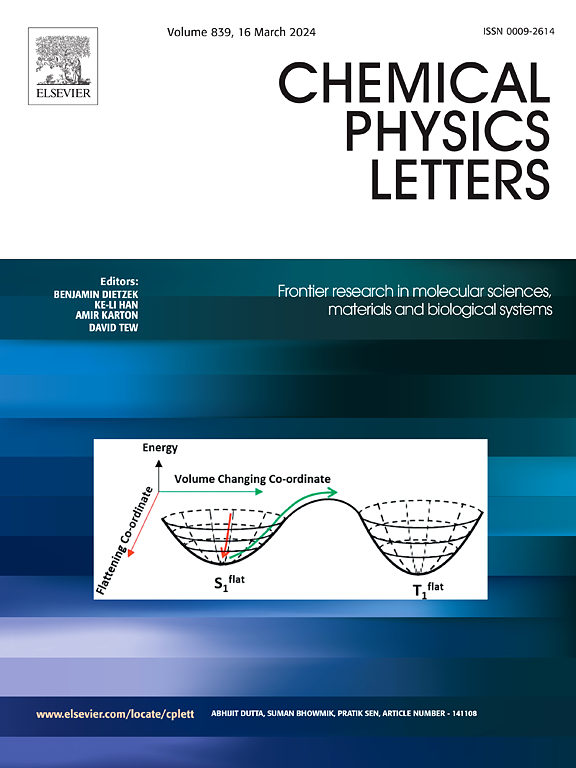First-principles study on the electronic properties of BTe/MoTe2 van der Waals heterostructure: The photocatalyst for overall water splitting
IF 3.1
3区 化学
Q3 CHEMISTRY, PHYSICAL
引用次数: 0
Abstract
The aim of this paper is to investigate the electronic properties and optical properties of BTe/MoTe2 van der Waals (vdW) heterostructure by using first-principles calculations based on density-functional theory (DFT). We obtain a BTe/MoTe2 vdW heterostructure with a band gap of 1.069 eV and the Type I band alignment. Both electrons and holes reside in the MoTe2 monolayer, and it exhibits excellent light absorption coefficients (over 105 cm−1) in the visible and partial ultraviolet ranges, promoting solar light absorption and electron-hole pair generation. The built-in electric field which formed at the interface accelerated the migration of photogenerated holes and photogenerated electrons between the layers. It greatly improves the photocatalytic efficiency. In addition, the biaxial strain makes a critical contribution to the bandgap modulation. We can find that the transition from direct gap to indirect gap and semiconductor to metal occurs in the elastic response range. Finally, we have also investigated the catalytic properties of BTe/MoTe2 vdW heterostructure and found that they have excellent photocatalytic hydrolysis properties. In summary, it can be seen that BTe/MoTe2 vdW heterostructure have excellent potential for next-generation photovoltaic and energy applications.

BTe/MoTe2范德华异质结构电子性质的第一性原理研究:全水分解光催化剂
本文的目的是利用基于密度泛函理论(DFT)的第一性原理计算研究BTe/MoTe2范德华(vdW)异质结构的电子性质和光学性质。我们得到了带隙为1.069 eV的BTe/MoTe2 vdW异质结构和I型带对准。电子和空穴同时存在于MoTe2单层中,在可见光和部分紫外线范围内表现出优异的光吸收系数(大于105 cm−1),促进了太阳光的吸收和电子-空穴对的产生。在界面处形成的内置电场加速了层间光生空穴和光生电子的迁移。大大提高了光催化效率。此外,双轴应变对带隙调制也有重要的贡献。我们发现在弹性响应范围内发生了从直接隙到间接隙和从半导体到金属的转变。最后,我们还研究了BTe/MoTe2 vdW异质结构的催化性能,发现它们具有优异的光催化水解性能。综上所述,BTe/MoTe2 vdW异质结构在下一代光伏和能源应用中具有良好的潜力。
本文章由计算机程序翻译,如有差异,请以英文原文为准。
求助全文
约1分钟内获得全文
求助全文
来源期刊

Chemical Physics Letters
化学-物理:原子、分子和化学物理
CiteScore
5.70
自引率
3.60%
发文量
798
审稿时长
33 days
期刊介绍:
Chemical Physics Letters has an open access mirror journal, Chemical Physics Letters: X, sharing the same aims and scope, editorial team, submission system and rigorous peer review.
Chemical Physics Letters publishes brief reports on molecules, interfaces, condensed phases, nanomaterials and nanostructures, polymers, biomolecular systems, and energy conversion and storage.
Criteria for publication are quality, urgency and impact. Further, experimental results reported in the journal have direct relevance for theory, and theoretical developments or non-routine computations relate directly to experiment. Manuscripts must satisfy these criteria and should not be minor extensions of previous work.
 求助内容:
求助内容: 应助结果提醒方式:
应助结果提醒方式:


